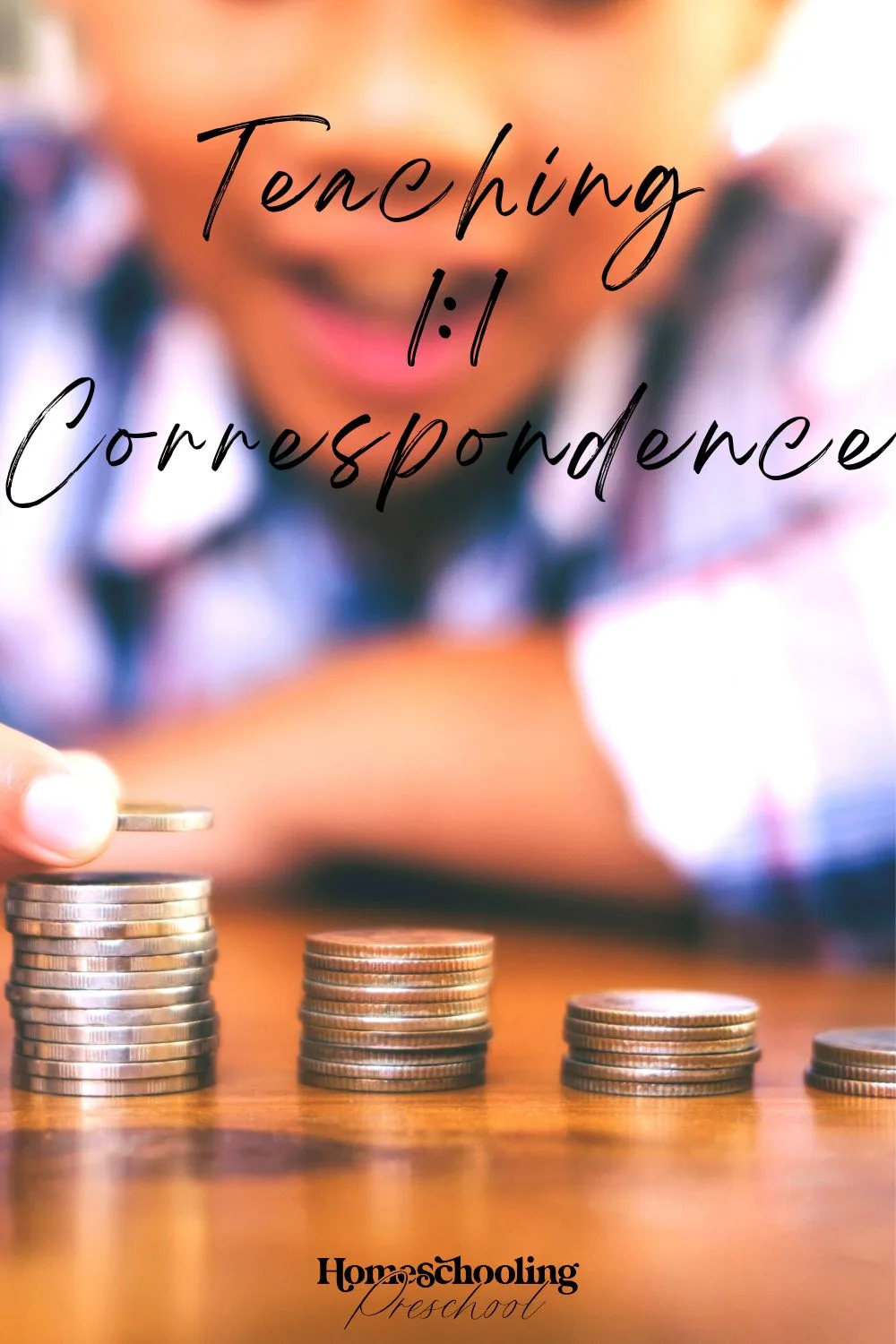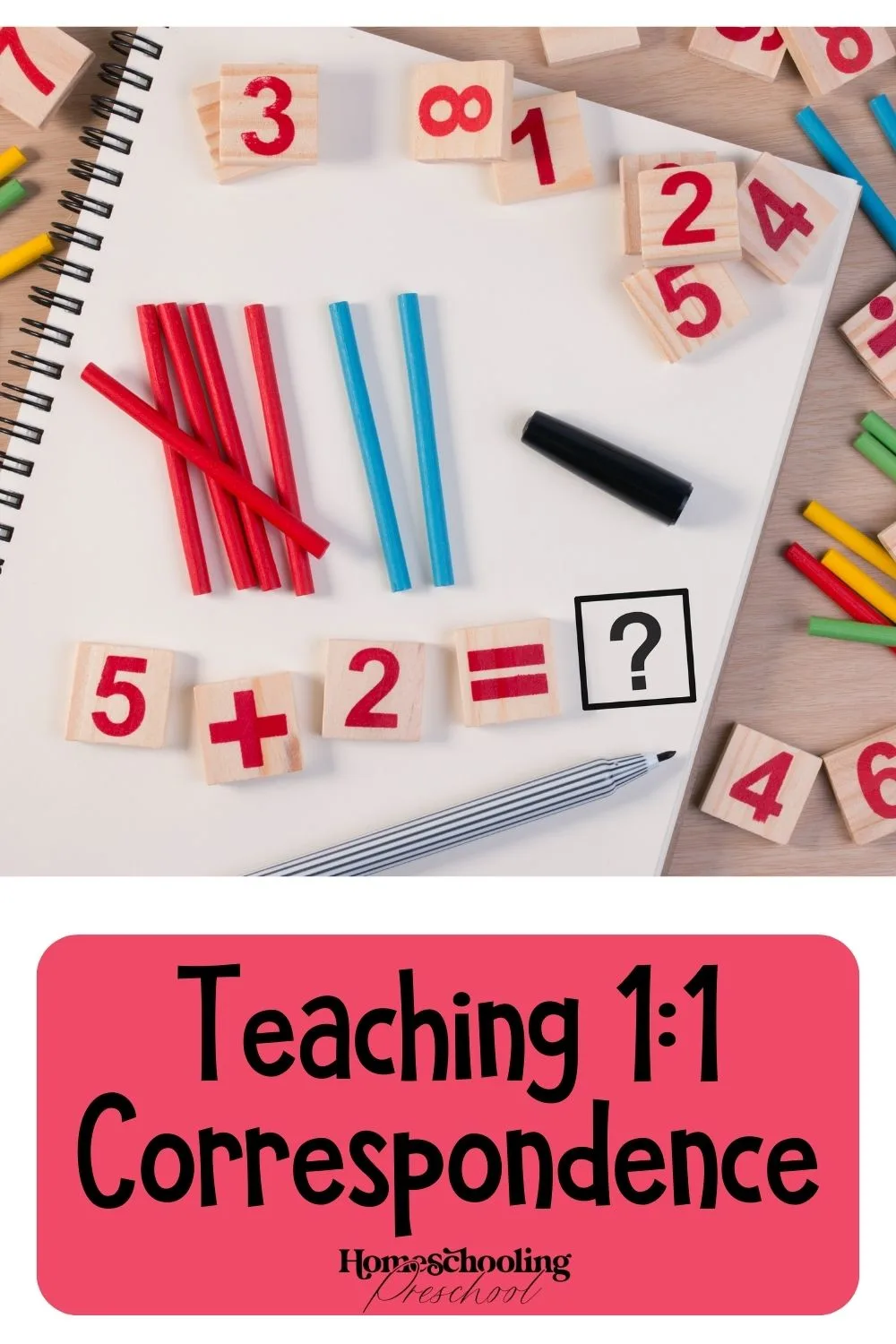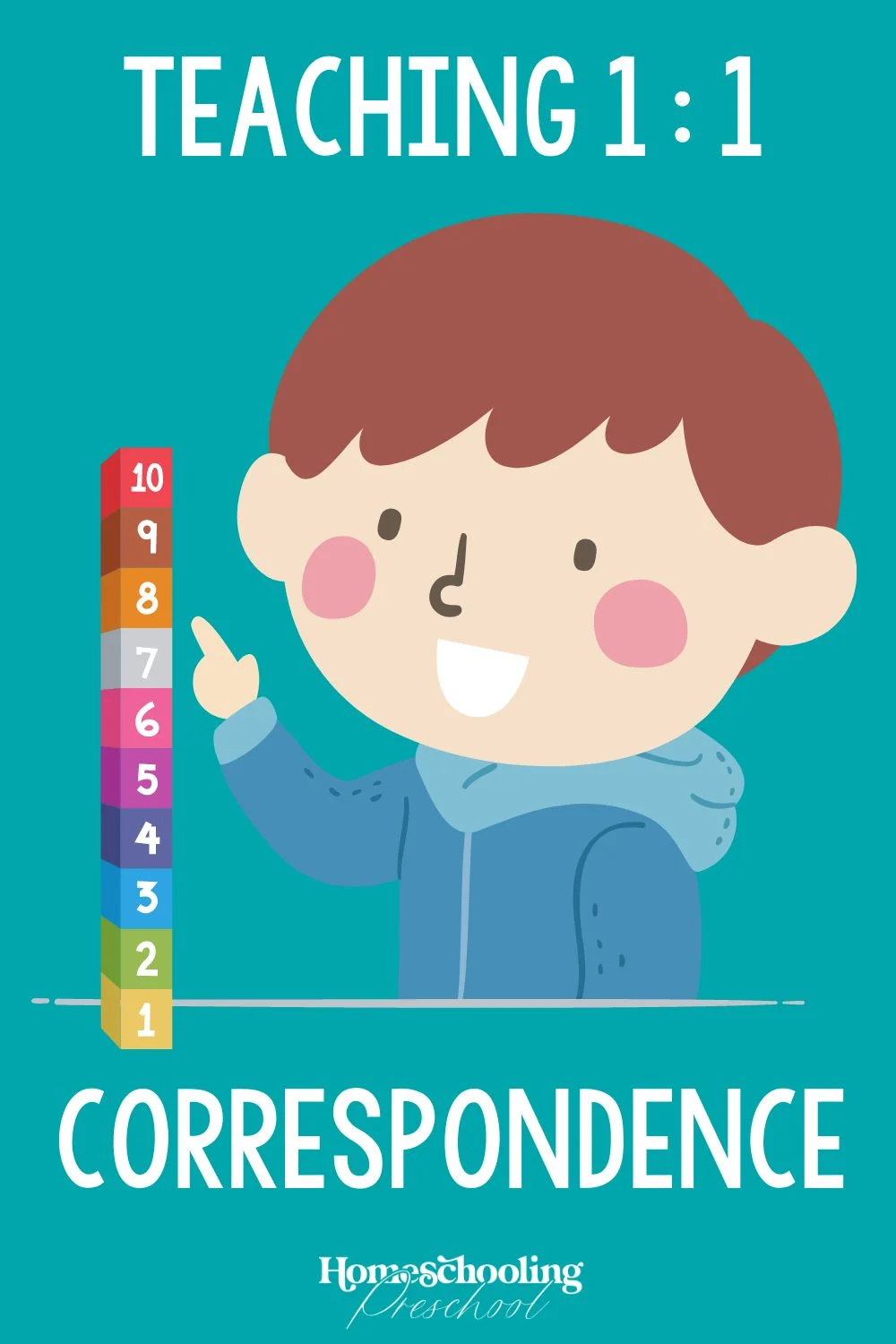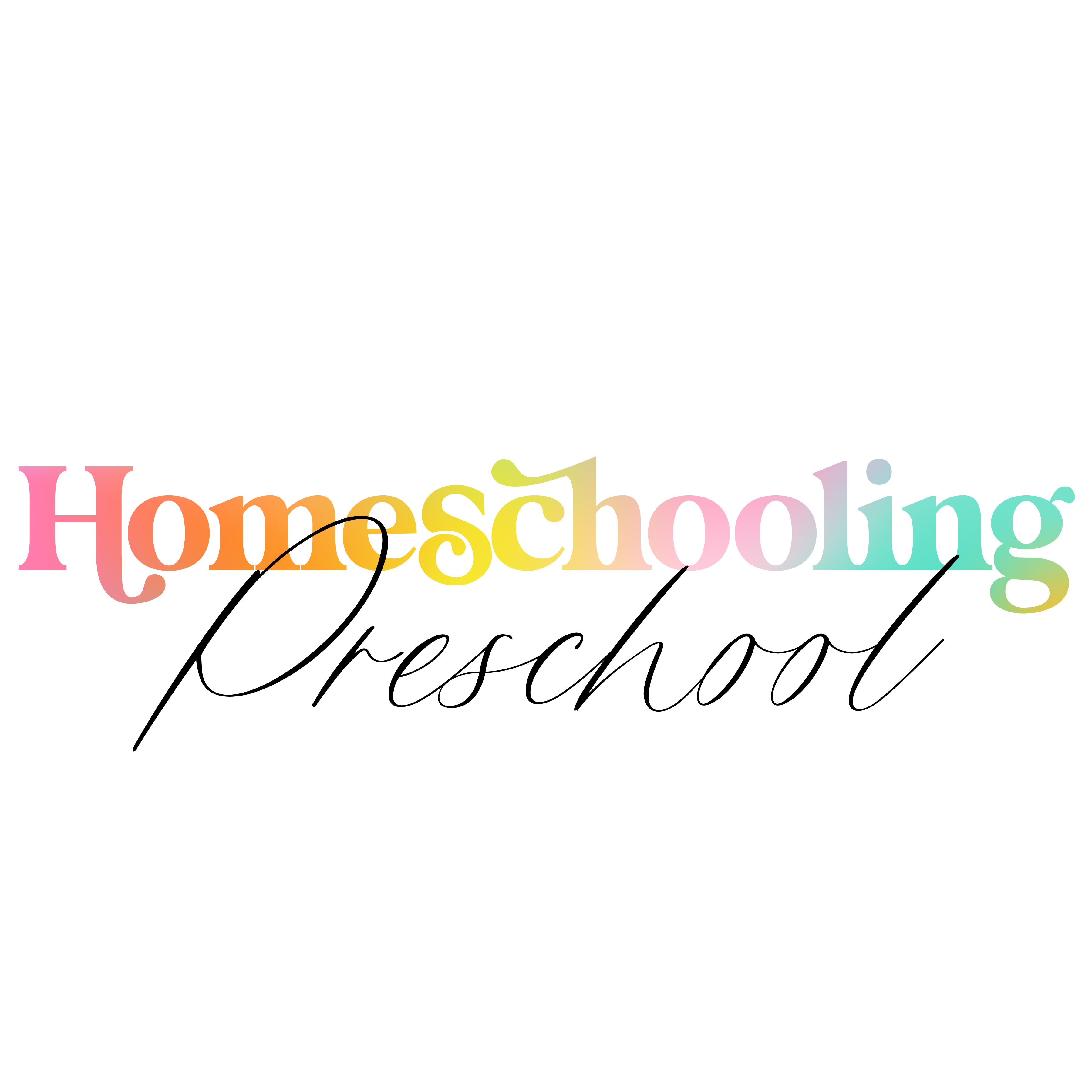Help little ones learn how to count items accurately with 1 to 1 correspondence.
This skill is an important part of preschool learning.

This article may contain affiliate links to products that may help you when homeschooling preschool.
What is 1 to 1 Correspondence?
1 to 1 correspondence refers to accurately counting items by touching one item at a time and saying the number.
For example, if there are five blocks on the floor, she would say one when a preschooler touches the first block.
When she touched the next block, she would say two.
It is also knowing that items pair up.
For example, each sock needs one mate, each person needs one plate, each ice cream cone needs one scoop of ice cream, etc.
One-to-one correspondence is NOT saying numbers quickly without touching or referring to items, even if the preschooler stops counting on the correct number.

This article may contain affiliate links to products that may help you when homeschooling preschool.
Why is it Important to Teach Preschoolers
When preschoolers learn 1 to 1 correspondence, they learn that each number holds a value.
The number five means five blocks.
It is not just another word (or collection of words when it comes to counting) that is recited.
One-to-one correspondence is the next step after rote memorization.
Spewing numbers as fast as she can doesn’t show that your preschooler knows the meaning of each number.
It simply shows that she has memorized the order the numbers go (which is also important).

How to Teach It
Start with a Few
Gather three blocks.
Put them in a row.
Touch the first block and say, “One.” Touch the next block and say, “Two.” Then touch the last block and say, “Three.”
Have your preschooler try it.
Starting with a few items helps preschoolers concentrate on the task at hand,1 to 1 correspondence, instead of worrying about remembering the names of larger numbers.
Count and Move
Not only does this make learning 1 to 1 correspondence more fun (and hands-on), but it also serves a purpose.
Moving the block (or whatever item) as you count out loud helps to distinguish to your preschooler that there is a group of blocks that are counted and a group that still needs to be counted.
The number said out loud indicates how many blocks were moved.

Make it Fun
Movement is essential to preschooler success.
Encourage your little one to jump and count out loud how many times they jump.
This is a different take on 1 to 1 correspondence because little ones can’t see a large pile of blocks (or jumps).
But rest assured that they are still practicing this important skill AND getting some exercise.
Set the Table
One-to-one correspondence is also your preschooler, knowing that each person needs one plate, cup, fork, and spoon.
Take advantage of learning this new skill by having your preschooler set the table.
It’s one less thing you need to do, and she gets to practice 1 to 1 correspondence.

Match Socks
Counting is only part of learning one-to-one correspondence.
Knowing that items pair up equally is another part.
Have your preschooler practice matching socks together.
Each sock only gets one mate, solidifying the one-to-one correspondence.
Plus, you get your sock bin matched up 😉
Play-Doh SMASH
Break out the Play-Doh and have your preschooler make little balls.
Once the balls are made, have her smash the balls one at a time.
As she smashes each ball, have her say the number out loud.

Preschool 1 to 1 Correspondence
One-to-one correspondence is a vital skill that littles need to practice, like many early childhood skills.
Take advantage of having your little one practice 1 to 1 correspondence and help around the house.
